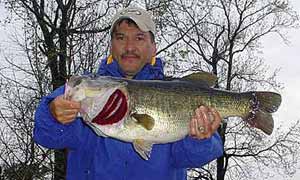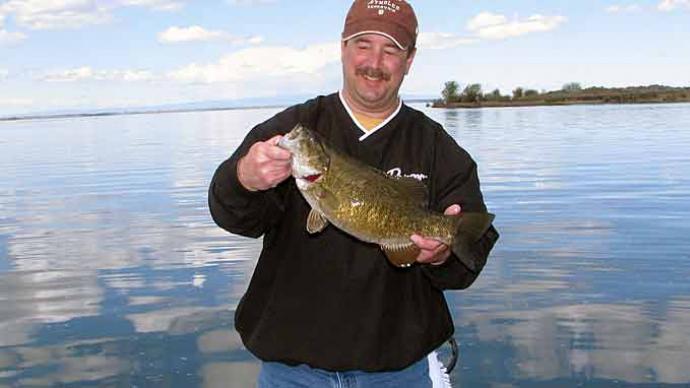
If anything sets successful anglers apart from all others, they can recognize changes in fishing conditions and make the appropriate adjustments.
Some days, bass refuse to bite no matter what you do. But if you suspect fish have pulled up stakes and left a hotspot, there are ways to track them down. Understanding bass movements and recognizing conditions that cause them to move will turn bad days on the water into good ones.
Bass move constantly. During my 17 years as a touring professional, I can recall only a few instances when bass remained in the same spot throughout a tournament. More often than not, they moved a few yards – or a mile or more. It was my awareness and preparation for those movements that allowed me to relocate them.
The key is understanding what triggers bass movements and anticipating those moves before they occur. Bass movements are fairly predictable, except during the spawning period – when fish don’t play by the book. All other times, however, they’ll follow migration routes that can lead you to their new hangout.
I believe the migration route is more important than the honey hole. When I zero in on a school, I want to know what led it to that spot and what route the fish will follow if they move.
Migration routes are merely underwater highways for fish. Bass will follow edges – such as creek channels, stump rows, weed edges, drop-offs, points – any distinct line that allows them to go from point A to B. Once fish are located and their travel route recognized, you can anticipate their next move when conditions change.
Assume you’re catching bass in 8 feet of slightly stained water on a sloping, rocky point. Close examination with a sonar unit reveals brush on the sides of the point in shallow water and a stumpy ledge in deeper water off the end of the point. If tomorrow brings a drizzly, overcast day, there’s a good chance the bass will move into the shallow brush. If the next day brings bright, clear skies, they may gather on the end of the point in deeper water. By understanding the options, you can adjust quickly and avoid leaving active fish that may have moved only a few yards.
Of course, it’s just as important to understand the conditions that cause fish to move and in which direction – deep or shallow.
Weather patterns are the most obvious, so every angler should monitor weather systems between fishing trips. The more drastic the weather change, the more likely fish will move. It can also affect how far they’ll move.
Weather patterns affect the bass’s environment, such as water level, water color, temperature, light penetration, current, and wave action – some of which can change several times daily and alter bass movement each time.
Overcast or windy days may cause fish to scatter in shallow water, while bright, sunny days can send them to heavy cover in deeper water. If clouds move in while you’re fishing a weedbed and action stops, the bass simply may have moved to the shallow, inside edges of weeds, where they can be more accessible and aggressive.
Water conditions can change, too. As a rule of thumb, rising and/or stained water will cause bass to move more shallow, while falling or clearer water may force them deeper.
Also, if the lake is a hydroelectric reservoir, bass will feed actively around shallow cover when water is moving. When the current stops, however, action stops, and fish return to deeper holding areas.
When trying to relocate bass, lure selection is critical. You must match the lure to structure, water conditions, the bass’s aggressiveness, and, of course, the amount of time you have to find them.
For example, if I know bass are within a 200- to 300-yard stretch of a ledge, I don’t mind dragging a pig-and-jig or plastic worm along it. But if instincts tell me the fish might be a mile apart, I’ll opt for a deep-diving crankbait or Carolina-rigged worm to cover water more thoroughly and quickly.
Admittedly, moving bass can be perplexing. But being aware of the circumstances that cause them to move and preparing to move with them will make you a far more successful angler.
You can find more articles, quick tips, and more at HankParker.com.




